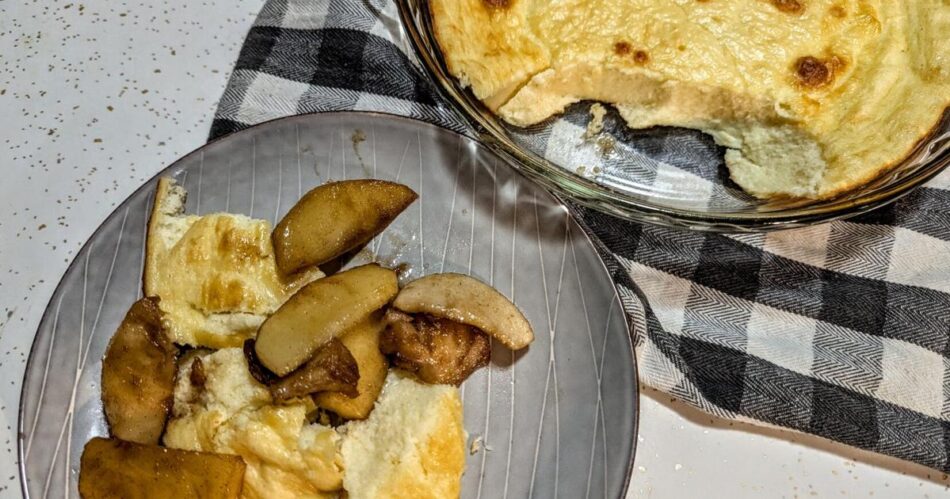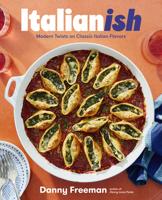What is Southern food?
Does the term conjure up a list of comfort foods: Fried chicken, barbecue, shrimp and grits, collard greens, cornbread, biscuits, mac and cheese? Or more stereotypical movie fare: Gumbo, fried green tomatoes, peach cobbler, pecan pie and mint juleps?
Neither of these lists is wrong, nor are they representative of the American South as a whole, according to culinary historian and James Beard Award-winning author Michael W. Twitty, who delves into the history of Southern cuisine in his newly-released cookbook, “Recipes from The American South.”
For this volume of 250-plus recipes, Twitty defines the American South as “stretching from the Chesapeake Bay region to the Bluegrass country over the Mississippi River Valley and over to the Ozarks, the Southern plains west to Texas Hill Country and the Deep East, southward toward the coast of the Gulf of Mexico.” He also includes the U.S. Census Bureau’s designation of Delaware, Maryland, Missouri, West Virginia and Oklahoma as part of the South — not just by the borders of the Confederacy — because, he writes, the “definition and redefinition of Southern identity related to its confederate past isn’t sufficient … The largest culinary region of America doesn’t stop at the Mason-Dixon Line or the Ohio River or St. Louis, Mo., which bills itself as the gateway to the American West.”
The culinary history of the American South, he writes, can only be defined if the region and its history are broad and inclusive. That defining it by such a narrow definition, the borders of the Confederacy, “leaves out so many other essential populations, including Southern women, Native people, enslaved West and Central Africans and non-European immigrants — a profound story of human migration in and out of the South that began 13,000 years ago.”
Twitty, an African American Jewish writer born in Washington D.C., and of Mende, Akan and Irish descent, does not shy away from the culinary region’s vast history in telling the story of its food. Through section introductions and headnotes on recipes, he interweaves the stories of how most Southern food came to be; is “a product of fortunate collisions, cooperations and sometimes chaos or confusion.” European colonization brought food staples from the Americas — corn, tomatoes, potatoes, squash, peppers, rice and sugarcane — not only to Europe, but to Africa as well. American Indian recipes mixed with European, then later with those brought over by enslaved West and Central Africans. In turn, those recipes would later be influenced by waves of European and non-European immigrants, who would further influence flavor and preparation. Southern cuisine, I have learned, historically, is as inclusive and diverse as the region is large. I’m a fan of this cookbook for its recipes, the culinary history it holds and the beautiful photographs throughout it.
In searching for a recipe to try, I decided to try the Spoonbread, a recipe that is served at Colonial Williamsburg, where, in January 2017, Twitty was named its first “Revolutionary in Residence.” It’s also, I learned, considered to be a prime example of blended cooking origins, a mix of European, Indigenous and African American cooking techniques. The earliest versions are thought to originate with the Sewee tribe in North Carolina. Early colonial recipes use wheat flour in the recipe. The versions like the one featured here, using white corn flour and a soufflé technique, are attributed to enslaved African American chefs trained in the French culinary method. Traditionally, it is served with additional butter. Indigenous Americans are said to have served it with honey. I chose to serve it with Virginia Fried Apples, an homage to the season.
Virginia Fried Apples are simply what they seem: apples fried in clarified butter (ghee) or bacon fat. The recipe includes brown sugar and if desired, the addition of cinnamon or Kitchen pepper. Kitchen pepper is a colonial and antebellum spice blend (2 tablespoons freshly ground coarse pepper, 1 tablespoon each, ground: allspice, cinnamon, ginger, mace, nutmeg and white pepper and 1 teaspoon cayenne pepper). I used cinnamon.
Spoonbread is simply a custard-like bread that is eaten with a spoon. I enjoyed it with the fried apples and also tried it with just honey. Both versions were delicious. The spoonbread recipe does require the heating of milk and tempering of eggs (bringing whisked eggs up to the temperature of the milk by slowly adding in a small portion of the heated milk while whisking). I suggest keeping a close eye on the milk, as I scalded it on my first attempt. Also, failing to temper your eggs will result in scrambled egg clumps. I watched a video on YouTube before doing it.
SPOONBREAD
Spoonbread is a custardy side dish that should be served with butter, honey or topped with Virginia Fried Apples.
(Excerpted from “Recipes from The American South” by Michael W. Twitty. © 2025 by Michael W. Twitty. Used with permission of Phaidon. All rights reserved.)
Spoonbread or batter bread is a custardy side dish born in the Chesapeake Bay region in the earliest cultural collisions between Native Americans and the British. The dish spread west as Southerners migrated out of Maryland and Virginia, into the Southern midlands of Kentucky, Tennessee, Missouri and northern Arkansas. At Colonial Williamsburg, America’s largest living history museum located in southeastern Virginia, this dish is served with bacon, fried apples and herring roe, to cater to tourists. In the South Carolina Lowcountry, this dish was alternatively known as “awendaw”, named for a locality in Charleston County.
Prep time: 15 minutes
Cooking time: 50 minutes
Serves: 6
INGREDIENTS
Softened butter or cooking spray, for the baking dish
2 cups whole milk
1 cup finely ground white cornmeal
2 tablespoons unsalted butter, plus more for serving
3 eggs
1 teaspoon fine salt
1 1/2 teaspoons sugar
1 teaspoon baking powder
1 cup buttermilk
DIRECTIONS
Preheat the oven to 375 F. Grease a 9-by-13-inch oval baking dish.
In a medium saucepan, bring the milk to a gentle simmer over medium heat. Gradually whisk in the cornmeal, stirring constantly to prevent lumps. Continue to cook until the mixture thickens, about 5 minutes. Remove the saucepan from the heat and stir in the butter, allowing it to melt into the mixture.
In a bowl, whisk together the eggs. Temper the eggs by slowly adding a small amount of the hot cornmeal mixture, whisking constantly. Gradually add the tempered eggs back into the saucepan, whisking to combine.
Add the salt, sugar, baking powder and buttermilk to the mixture, stirring until smooth. Pour the batter into the prepared baking dish.
Bake for 35-40 minutes, until the top of the spoonbread is golden brown and a toothpick inserted into the center comes out clean.
Let cool slightly before serving. Serve with plenty of butter.
VIRGINIA FRIED APPLES
A mix of Cortland and Honeycrisp apples fry in a cast-iron skillet.
(Excerpted from “Recipes from The American South” by Michael W. Twitty. © 2025 by Michael W. Twitty. Used with permission of Phaidon. All rights reserved.)
An essential Virginia breakfast dish and side dish is fried apples — they are sautéed in clarified butter or bacon fat and kept plain or seasoned with your choice of Kitchen pepper or cinnamon. This recipe is inspired by the grande dame of Southern cooking, the late Edna Lewis of Freetown, Virginia. It’s best to use a mixture of apple varieties of various textures and flavors.
Prep time: 10 minutes
Cooking time: 25 minutes
Serves: 4-6
INGREDIENTS
3–4 tablespoons clarified butter (ghee) or bacon fat (streaky)
6 medium apples (about 2 pounds), cored, peeled and sliced into eighths
1/3 cup superfine (caster) or brown sugar
Pinch of Kitchen pepper or ground cinnamon
DIRECTIONS
In a medium cast-iron skillet, melt the butter or bacon fat over medium heat. Once it’s hot and sizzling, add the apples in one layer. Cover the skillet, reduce the heat to medium-low, and cook until the apples begin to soften, 5–8 minutes.
Uncover, sprinkle the sugar and Kitchen pepper or cinnamon (if using) over the apples, then cook, stirring occasionally, until they give up their juices, 10–15 minutes. (Add water if the pan seems to be getting too dry.) The apples are done when they are soft and fragrant, slightly jammy, and somewhere between a light and medium amber color.
Serve warm.
COOKBOOK REVIEW
“Recipes from The American South” by Michael W. Twitty
Published by Phaidon
432 pages
$54.95







